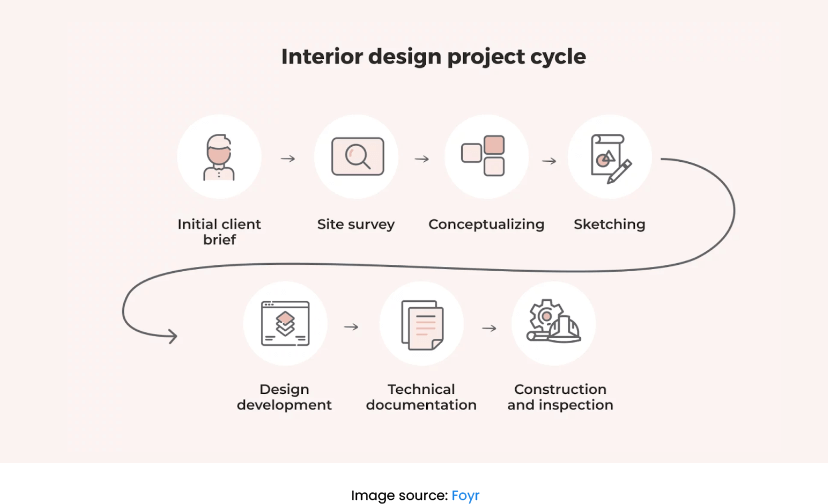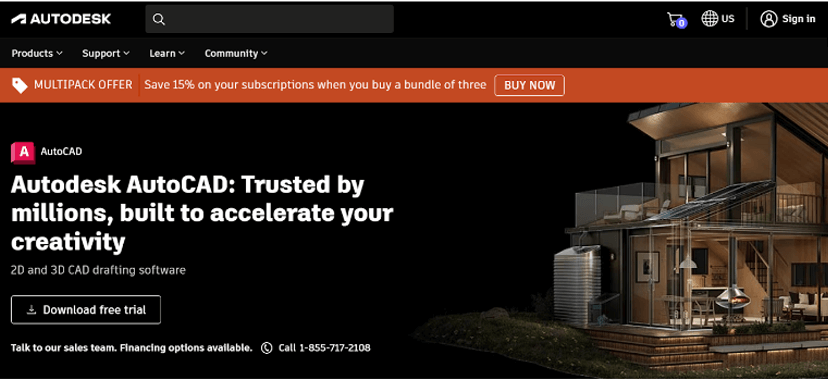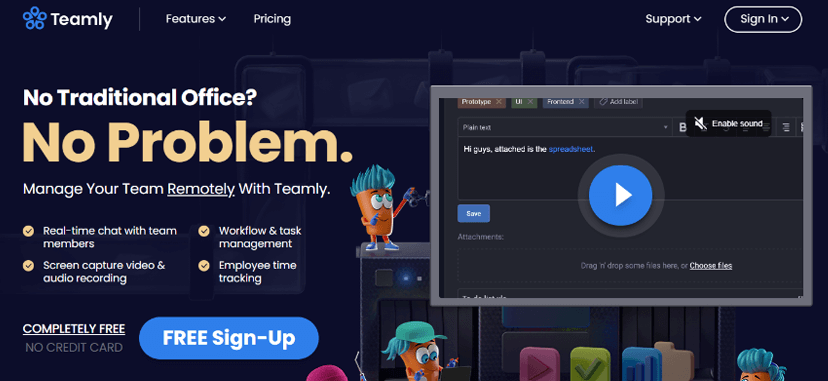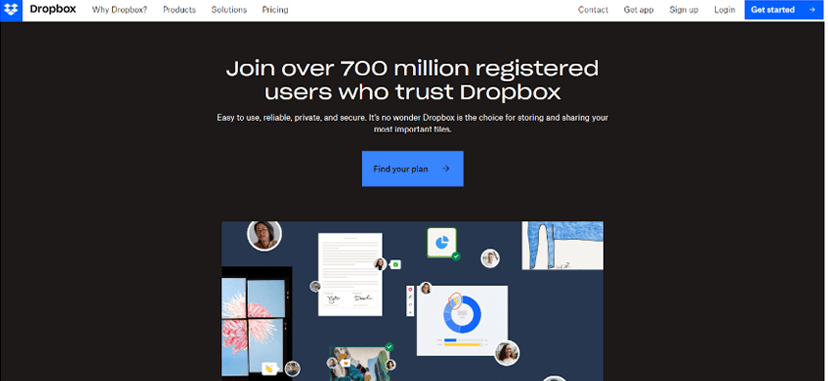Talent mobility is a strong driving force.
It keeps the professional world dynamic and opens multiple avenues for success.
Organizations have long understood the importance of investing in their most talented workers. But today, it’s a strategic concept with real impact. And there is a good reason why.
In this blog post, you’ll learn about the benefits of talent mobility and the best practices to empower your business. Finally, grab a list of talent mobility platforms to fill talent gaps and improve your team’s agility.

What is talent mobility?
In general, talent mobility means strategically moving employees within or between organizations. It allows employees to develop skills and pushes companies towards their goals.
Internal talent mobility specifically focuses on the movement of employees within the same organization. Employees may be transferred to different departments, teams, or roles. Without leaving the company, they gain new experiences and improve their skills.
The key benefits of talent mobility
Workforce mobility opens a world of possibilities, leading to improved engagement. Here are the major advantages that force companies to adopt a culture of mobility.
Closing skill gaps and planning replacement
If you have an effective talent mobility strategy, skill gaps are no longer frightening.
Instead of solely relying on external hiring, you focus on filling critical roles internally. Also, your strategy supports succession planning. You easily identify and develop internal candidates for future leadership positions. This proactive approach creates a pipeline of capable leaders ready to take responsibility when the time comes.
Satisfaction and loyalty
Take the employees in any company. Who’s most likely to start searching for new opportunities? You got it! It’s the employee who feels stuck with no chance to grow. Offering mobility opportunities, you can keep your top talent and use their full potential.
Therefore, suggest your employees’ career progression. When employees have the chance to explore different roles, they’re more likely to feel motivated and satisfied in their work.
Agility and adaptability
Facing market shifts? Evolving customer demands?
By enabling talent mobility, you can assign people to areas that require immediate attention. Put talent and mobility at the heart of your business, and you’ll remain agile and adaptable. Like never before, you’ll quickly reallocate resources and respond to changing market needs.
Knowledge sharing and diversity
When employees move across different roles, they bring fresh ideas and experiences with them. Everyone contributes their unique perspective, enhancing diversity and the sense of camaraderie.
Surely, this cross-pollination of knowledge improves collaboration within the entire organization. As a result, everyone gets a more holistic understanding of the business.
Gradually, an effective talent mobility strategy sparks creativity, fuels innovation, and enables teams to develop breakthrough solutions.
Cost savings
What if you could also cut recruitment and onboarding costs? In fact, by focusing on internal talent mobility, you can fill positions more quickly, minimize downtime, and ensure a smoother transition for employees.
Strengthening your brand
A robust talent mobility program can draw the best candidates to you.
What happens when top management actively promotes talent mobility? It signals to potential candidates that the organization values growth, development, and internal career advancement. As a result, this can have a positive impact on your reputation as an employer of choice.

What are talent mobility programs?
Talent mobility programs are strategic initiatives designed to maximize the potential of employees. These programs facilitate the transfer of talent across different roles, projects, and departments.
Types of talent mobility programs
Typically, talent mobility programs include various components that support employee mobility and development.
1. Internal job postings
You can establish a system where internal job postings are made available to employees. This allows them to apply for positions that match their skills and interests.
2. Skills assessment and development
Often, talent mobility programs involve assessing employee skills, competencies, and career goals to identify areas for development. For example, you may offer training or mentoring to help employees acquire the necessary skills for their new roles.
3. Succession planning
Without succession planning, you will miss out on a powerful tool to identify high-potential employees and prepare them for future C-suite positions. Incorporate succession planning into your internal mobility strategy. And you’ll ensure a smooth transition when key roles become vacant.
4. Cross-functional projects and rotations
Do you allow your employees to work on cross-functional projects? Are there opportunities to participate in rotations across different departments? If not, you should consider designing and implementing such practices. They allow employees to get familiar with different aspects of the business and develop a broader skill set.
5. Internal talent marketplaces
Some talent mobility programs use internal talent marketplaces or platforms that help employees find opportunities within the organization. These platforms analyze data about available projects, roles or growth opportunities. Afterwards, they make relevant suggestions for each employee.
Examples of companies embracing talent mobility
Consider these talent mobility solutions from top-performing companies for a sip of inspiration:
Google offers various internal mobility programs to its employees. For example, the “Googler-to-Googler” program allows employees to spend a few weeks working on projects in different teams or locations, fostering cross-functional collaboration and knowledge sharing.
Microsoft
Often, Microsoft is cited as a success story when it comes to talent mobility. The company implemented a program called “Talent Talks” to facilitate internal mobility and career development. Through this program, employees can discuss their career goals and interests with their managers. By the way, they do this on a regular basis.

How to develop a talent mobility program? A framework for success.
Of course, effective talent mobility management requires commitment and expertise. But it also requires a deep understanding of its processes. Here are key steps to enable talent mobility:
Step 1: Define talent mobility goals.
First, define the specific objectives and goals you want to achieve. These could include filling skill gaps, promoting employee development, improving retention rates, or enhancing organizational agility. Plus, ensure these objectives align with the overall business strategy.
Step 2: Assess current talent.
Conduct a full assessment of the existing talent pool to identify employees’ skills and aspirations. This evaluation helps to understand the organization’s strengths and potential gaps that can be filled with talent mobility.
Step 3: Build a culture of learning.
Next, create a culture that values continuous learning and development. Offer training programs, mentorship opportunities, and access to resources that enhance employees’ skills and competencies.
Step 4: Establish career development pathways.
At the same time, develop clear and transparent growth routes. The details of each role, responsibility, and skill requirement should be crystal clear. Simultaneously, communicate these pathways to employees and let them know that everyone can benefit from them.
Step 5: Implement talent development programs.
Don’t forget to design and implement talent mobility programs that provide employees with diverse experiences. As mentioned earlier, this may include job rotations, cross-functional projects, or temporary assignments in different departments.
Step 6: Identify and remove barriers.
Be aware of internal resistance. Managers will probably be hesitant to let their top performers go. Besides, they may have valid concerns about the potential disruption caused by transitions. All of this can result in pushback against your talent mobility efforts. Acknowledge these barriers and make sure they don’t get in the way.

Talent mobility: Best practices and tips for success.
Before getting down to work, grab three insightful tips to craft effective talent mobility solutions.
Support internal mobility processes and provide mentorship.
Leaders’ guidance is crucial in building a culture that values internal talent mobility. That’s why you should offer coaching to help people navigate their journeys. Pair employees with experienced mentors who can provide advice about different roles and career paths.
Pro tip: Don’t forget about work-life balance. Sometimes, talent mobility programs involve geographical relocation or changes in work schedules. This can cause a loss of work-life balance and productivity. As employees transition to new roles or teams, be prepared to have a plan for the adjustment period.
Develop transparent policies and processes.
Ensure employees are well-informed about talent mobility opportunities. Provide full information on available roles and the benefits of mobility.
Pro tip: Define eligibility criteria, application procedures, and guidelines for employee selection. Ensure that employees understand the steps involved and how decisions will be made. Without this, they’ll lose the sense of transparency and fairness.
Promote internal networking.
Finally, create platforms for employees to connect, network, and learn from one another. This can include cross-functional projects, communities of practice, or internal networking events. What’s more, encourage employees to seek new challenges, take on stretch assignments, and share their expertise with others.
Pro tip: Employees who take on new roles through talent mobility may face challenges. Talk about the possible issue. If there is no serious mismatch, these conversations will prepare your employee to handle the new requirements easily.
Best talent mobility software: Five platforms to optimize your path.
Uncertain if you can handle another task in your busy workload?
Here’s the thing: talent mobility management shouldn’t consume your time or detract from strategic tasks. So, intentionally facilitate internal talent mobility with platforms that offer unique features. These tools will help you increase visibility and later assess the results.
Workday Talent Management: Simplify and optimize your processes.
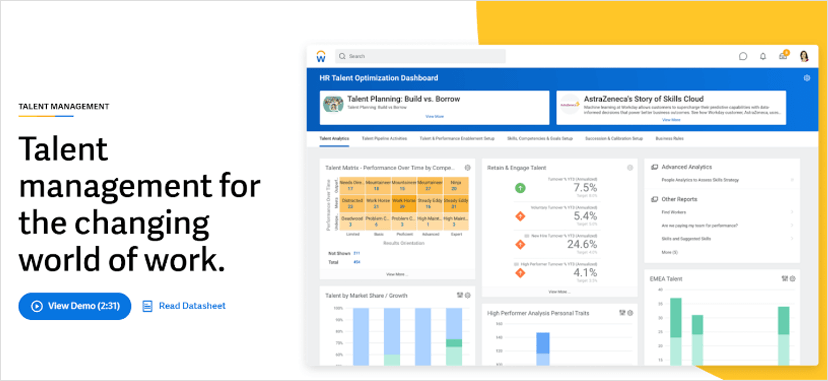
Unlock the potential of your teams with Workday Talent Management (which is a module within the Workday HCM suite).
By attracting talent and nurturing their growth, this platform serves as a great tool in the HR landscape. You can optimize recruitment processes and continuously review employee performance. Also, you can create personalized career paths for each of your employees.
SAP SuccessFactors: Drive success through powerful solutions.
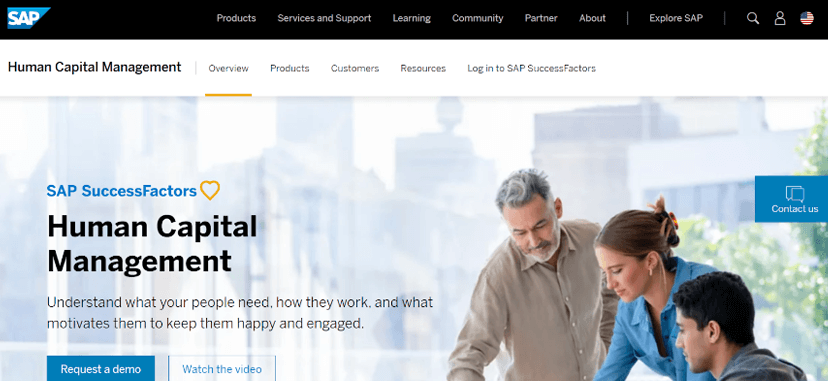
Identify skill gaps, create succession plans, and enable talent mobility with SAP SuccessFactors. By the way, you’ll find tools for employee self-assessment, career path planning, and internal job postings on this platform.
Lattice: Empower performance and engagement.
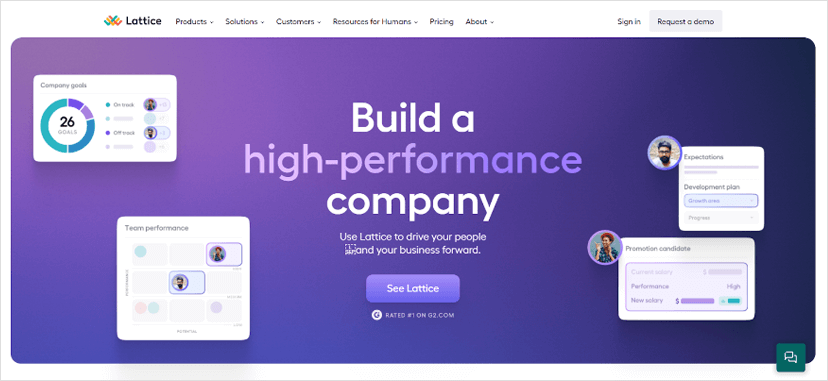
Transform the way you engage your employees and track their performance.
With Lattice, you can have meaningful conversations with your team, set clear goals, and provide real-time feedback. What’s more, it provides tools for tracking progress and identifying growth opportunities.
Eightfold AI: Unlock talent potential with AI-driven insights.
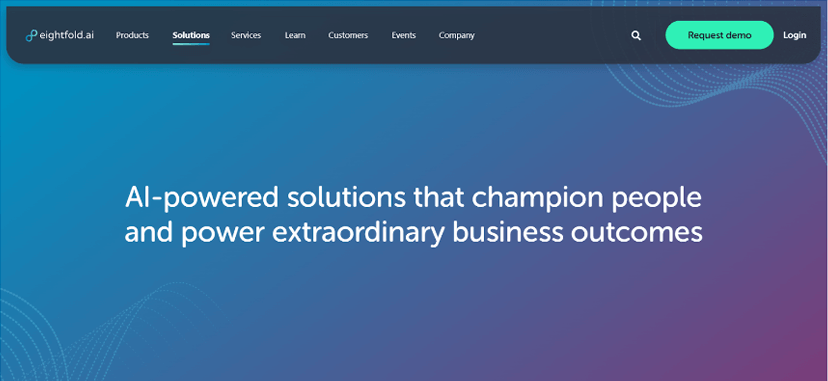
Eightfold AI is an AI-powered talent intelligence platform that helps to match candidates with job opportunities. Besides, this platform allows you to improve candidate sourcing and develop strategies for talent acquisition.
Plus, with Eightfold AI, you can identify top candidates and remove bias in the hiring process.
15Five: Cultivate growth and feedback
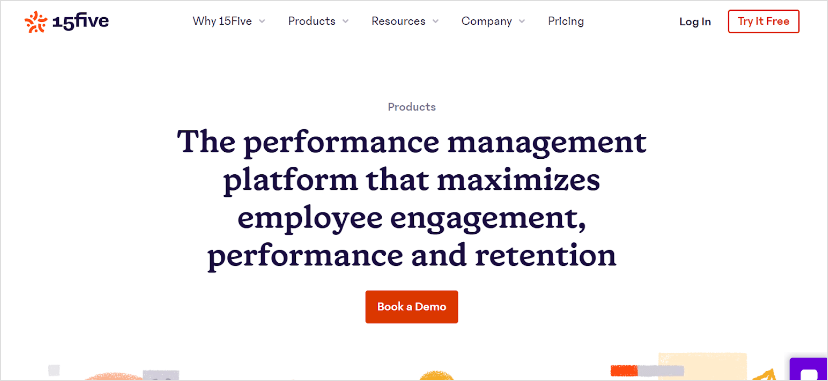
Elevate performance management with 15Five. This platform is designed to foster a culture of open communication, continuous feedback, and growth. Let your managers have regular check-ins with their teams, recognize achievements, and set goals effectively.
Wrapping up…
To sum up, by encouraging the free flow of talent, you avoid talent flight and position yourself for transformation.
The key is simple: create a professional environment that welcomes fresh perspectives and clashes of ideas.
With talent mobility driving you, your business will thrive, adapt, and achieve remarkable success.













































